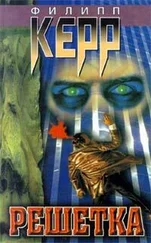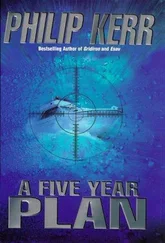The thought of his impending discomfort, possibly even death, made Gates, like the other dozen men and women waiting to be catapulted back to Earth, irritable and anxious to get started. But there was a delay. A late passenger, the Superconductor computer informed them.
‘What kind of a late passenger?’ demanded Gates. ‘The rest of us have known for weeks we would be traveling today in this goddamn slingshot. Who is it?’
‘It’s got to be another prisoner,’ declared the woman lying alongside Gates. ‘Who else would fly this way?’
The woman’s name was Lenina. Gates had thought her the best-looking woman on Artemis Seven, but he had never had an opportunity to speak to her — until now, when he was feeling too nervous to reply.
‘I have no further information at the present time,’ said the computer. ‘Please be patient.’
‘That’s easy for you to say,’ Gates told the in-flight computer. ‘You’re not about to experience Newton’s Second Law of Motion, with all its delightful physiological side effects.’
‘Have you taken your g-pill yet?’ the computer parried.
The door opened and two prison guards loaded a g-pod [13] Self-contained gravity pod, capable of withstanding 15 g’s, for the transportation of sick and injured people aboard a Superconductor.
bearing Cavor, and then strapped it to the floor. With the exception of the face visor, the pod enclosed the whole of Cavor’s body, concealing the full extent of his injuries. Gates released his neck brace and stretched across Lenina to take a look at Cavor’s face. He didn’t recognize him.
When the doors were closed again, the superconductor coils in the alloy monorail began to build up the electric current that would send them on their way.
Lenina said, ‘They say that if the Superconductor could go slow enough, you could get a great view of TB. [14] Tranquillity Base.
So they say. Of course, you’d have to have your head positioned to look out of the window, and there’s not much chance of moving a muscle when we take off. They’ve got a museum of the first Moon landing at TB. You can see the lunar module and the astronauts’ footprints. Or so I’m told.’
‘Ten K, [15] Kelvin. The SI unit of thermodynamic temperature.
and counting,’ said the computer.
‘Is that a fact?’
‘I’d sure like to come back and see all that for myself.’
‘You would?’ Gates glanced nervously out of the moonlit window.
‘You nervous?’ Lenina shouted over the noise of the current. It was getting louder by the second, like the hum of an enormous and very angry wasp.
‘Thirty K and counting.’
‘Why should I be nervous?’
‘Fifty K and counting.’
‘I thought I heard you say you were going to pray. Would you care to hold my hand?’
‘Transition temperature,’ [16] The temperature below which the monorail becomes superconducting is called the transition, or critical, temperature.
reported the computer. ‘Prepare for takeoff.’
‘Thanks, I don’t mind if I do.’
Gates took hold of Lenina’s hand and found her grip as strong as a robot’s. He glanced at her white knuckles and smiled thinly. She sounded cool enough, but the truth was that she was just as nervous as he was.
His eyes flicked to the injured man in the g-pod on the floor. Something was wrong. The face visor was all misted up, as if no air was circulating within the pod. Gates realized right away what was wrong. The stupid bastards who had placed the man there had forgotten to switch on his air supply. If the pod wasn’t opened and switched on, he would die of suffocation. There was no time to think about it. Gates ripped off the neck brace and unbuckled his seat belts. Once the Superconductor was in motion, the g-forces would be so great there would be no chance of him moving so much as an eye muscle. It was now or never.
‘Are you crazy?’ protested Lenina. ‘You’ll be killed.’
‘Please return immediately to your seat,’ ordered the computer. ‘We will take off in twenty seconds.’
Gates knelt by the g-pod and started to count. He tore open the catches and lifted the pod lid. It was plain to see why he was being sent back to Earth. The man took a deep breath, and to Gates’s surprise smiled up at him.
‘Thanks,’ he croaked.
‘Return to your seat immediately. Ten seconds to takeoff.’
‘Don’t mention it, Lefty.’ Gates switched on the air supply and slammed the pod lid shut again.
‘Sit down please. Five seconds.’
Scrambling back to his seat Gates threw himself down on his back and started to buckle up again.
‘Crazy bastard,’ yelled Lenina.
‘Three, two...’
There was no time for the neck brace. Not even time to finish all the belt buckles. Just enough time to press his head back into the seat and hope for the best. The next moment they were catapulted forward along the ramp. Superconductor trains achieve speeds on Earth of almost three hundred miles per hour. But on the Moon, mass and its gravity do 83 percent less to slow down the body of the Superconductor vehicle. In just a few seconds Gates felt enormous g-forces starting to build as the vehicle’s speed increased until they were traveling at several thousand miles an hour. And as the vehicle was hurled off into space at the end of the ramp, the last thoughts of Rameses Gates before blacking out were of the incredible escape velocity displayed on the Superconductor’s overhead speedometer, the handsome woman lying alongside him, and the passenger with only one arm.
It was always a source of fascination, perhaps the original source, imbued in man’s consciousness with mystic, even magical importance. A central totem in all early civilizations, important to classical myth, a fundamental aspect of nearly all religions, it remains a recurring image, arguably the most potent image of all. By Roman Catholics it may be regarded with symbolic reverence; by purified Jews, as something defiling and unclean. It is the very incarnation of kinship, but also denotes murder and feud and, as often as not, atonement. It is blood — crimson, viscid, thicker-than-water, continuously circulating blood: the stuff of epic poems, fetish cult, and great drama. A source of power — now, more than ever — and a libation for the gods, blood is the great tree that lives inside us all. But it is much more than merely a metaphor of life, as even those pioneering medical men and women who made blood their life’s work came to forget. For centuries, blood has been the largest and the most intensively studied organ of the human body. And yet those who studied it — and understood it best as a matter of red cells traveling three hundred miles during their one hundred and twenty days in circulation — did not carry with them that ancient sense of mystery, the knowledge that blood is life itself. Easily sampled, thoughtlessly spilled, life’s blood is both a fluid and a tissue, as red as precious rubies and yet much more valuable.
Strangely, no one treasured it. True, blood was banked, but without any real understanding of the idea, with the term ‘blood bank’ used generically, as a blood center, a hospital-based transfusion service, or some combination of these. It is only now, toward the end of the twenty-first century, that the precious value of blood can be properly appreciated and understood. Well, almost; the cosmological significance of blood continues to elude most people: It is certain that the mathematics of blood, the numbers inherent in its complex structure, provide perhaps the best evidence for the existence of some kind of Creator.
Take something like the process of coagulation, which requires the participation of several hemostatic proteins. As many as fifteen coagulation factors are activated via a stepwise series of reactions — each step having its corresponding regulatory anticoagulant factor — which culminate in the formation of a solid fibrin clot; protection against excessive clot formation, or thrombosis, is afforded by a second series of hemostatic proteins, of which plasmin is the most potent, and which form the fibrinolytic system (in its turn, the fibrinolytic system has its own inhibitors to prevent over activity); plasmin itself needs to be activated from its inactive form — plasminogen — by yet another protein, plasminogen activator. It is hard not to understate the irreducibly complex nature of this system. The ratio of the probability that such a system might come into being by pure chance to the probability that it might not come into being is so enormous that it is almost impossible to find a number large enough to express these odds. However, I think it would approximate to something like the number of red cells that a healthy adult male would produce in a lifetime; given that in one second he produces 2.3 X 10 6, this number, if represented as a number, would look like this: 70 X 365 X 24 X 60 X 60 X 2.3 6, or about 5 x 10 15.
Читать дальше












